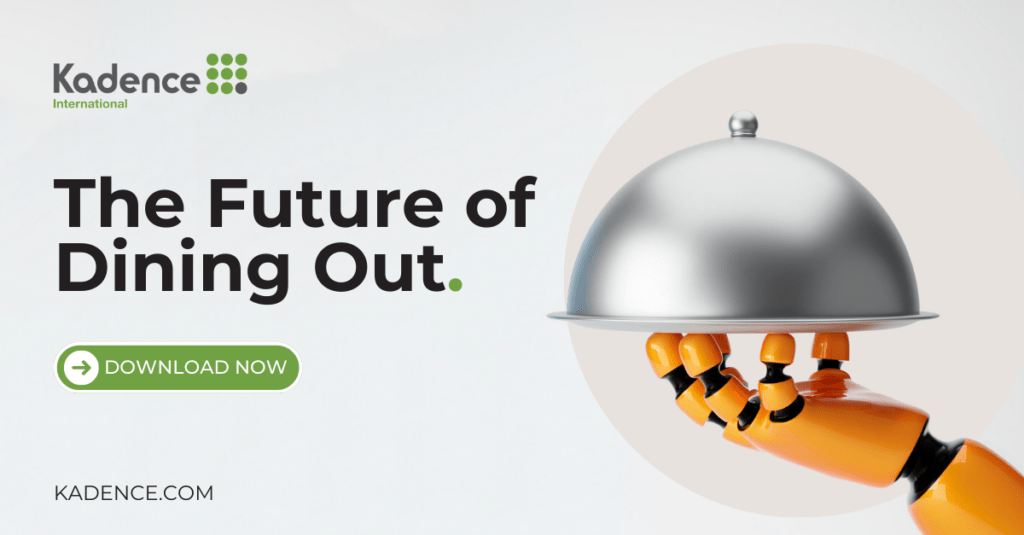As third-party cookies crumble, so does the foundation of digital advertising. The impending demise of these cookies and growing restrictions on mobile device identifiers are forcing brands to rethink how they connect with consumers. Apple’s App Tracking Transparency (ATT) and other privacy-first initiatives have reshaped the landscape, ushering in a new era where traditional tracking methods are no longer viable.
This shift is more than a technical adjustment—it demands a fundamental transformation of digital advertising strategies. Brands must move away from third-party tracking and embrace privacy-centric approaches to thrive in this environment. The path forward is becoming clearer, with three key strategies emerging as crucial: first-party data collection, second-party data partnerships, and revisiting contextual and interest-based advertising. Although each brand’s journey will differ, one constant remains—the importance of building strong consumer relationships while safeguarding privacy.
Also, read The Rise of Zero-Party Data: Enhancing Customer Trust and Personalisation.
The Internet Before Cookies
In the early days of the internet, privacy was more of a default. Websites operated independently, and tracking user activity across platforms was difficult. Users could browse anonymously, leaving little trace of their behaviour. However, this changed in the mid-1990s with the introduction of cookies, initially designed to improve user experience by remembering login details and preferences.
Third-party cookies evolved quickly, becoming powerful tools for tracking user behaviour across websites, enabling advertisers to deliver highly personalised ads. This marked the beginning of an era where cookies became the backbone of programmatic advertising and fueled the growth of digital giants like Google and Facebook.
However, as awareness of privacy issues grew, so did the demand for stronger protections. This led to regulations such as the General Data Protection Regulation (GDPR) and the California Consumer Privacy Act (CCPA), setting the stage for the eventual phase-out of third-party cookies.
The Golden Age of Third-Party Cookies
Before third-party cookies became widespread, digital advertising primarily relied on contextual targeting—placing ads based on the content of a webpage rather than tracking individual users. For example, a reader browsing an article about hiking might see ads for outdoor gear, not because the advertiser knew their browsing history but because of the relevance of the content. While effective to some degree, this method lacked the precision advertisers desired.
The introduction of third-party cookies changed everything. By enabling cross-site tracking, advertisers could deliver highly personalised ads tailored to users’ browsing habits, interests, and demographics. This precision significantly improved campaign effectiveness, making third-party cookies the cornerstone of programmatic advertising.
However, as third-party tracking became pervasive, privacy concerns followed. Users became increasingly aware of how their data was being collected and used, fueling the demand for stronger privacy protections. These concerns and regulatory pressures like GDPR and CCPA set the stage for the phase-out of third-party cookies and the rise of privacy-first alternatives.
Phasing Out Third-Party Cookies
Google has been preparing to phase out third-party cookies in its Chrome browser for years, but the timeline has shifted multiple times. The latest change delays the complete removal of cookies until 2025. Unlike Safari and Firefox, which have blocked third-party cookies by default, Chrome is taking a more gradual approach, allowing companies more time to adapt.
For marketers, this shift necessitates a pivot toward first-party data strategies and privacy-centric tools like Google’s Privacy Sandbox. These tools, along with alternatives like Adobe’s Real-Time Customer Data Platform (CDP), allow brands to collect and utilise first-party data while respecting privacy concerns. As the digital advertising ecosystem evolves, building strong first-party data strategies will be critical for maintaining effective targeting in a cookieless future.
The Path Forward for Advertisers in a Privacy-first World
The end of third-party cookies demands a fundamental shift in how advertisers collect and utilise data. Three key strategies will be crucial to maintain relevance and deliver personalised experiences in a privacy-first world: first-party data collection, second-party data partnerships, and contextual and interest-based advertising.
- First-Party Data Collection
First-party data will be the most valuable asset in a cookieless future. Unlike third-party cookies, which track users across multiple sites, first-party data is collected directly from interactions between users and a brand’s platforms, such as websites, mobile apps, and loyalty programs. By gathering data from their own touchpoints, companies can build a clearer picture of their customers’ preferences, behaviours, and needs without infringing on privacy.
To harness first-party data effectively, brands must prioritise transparency and user consent. Clear communication about what data is being collected and how it will be used is essential. Loyalty programs, personalised content, and interactive experiences are just a few ways brands can incentivise users to share their data willingly. The goal is to build trust while delivering value.
- Second-Party Data Partnerships
Brands can also collaborate with trusted partners to access second-party data. Second-party data is essentially someone else’s first-party data, shared in a privacy-compliant way. These partnerships allow companies to expand their understanding of their customers by gaining insights from non-competitive brands that target similar audiences.
For example, a retail brand might partner with a financial services company to better understand consumer spending habits and preferences. These collaborations can create a more holistic view of the customer journey, leading to more effective targeting and personalisation. Ensuring these partnerships comply with privacy regulations and maintain user trust is critical.
- Contextual and Interest-Based Advertising
As third-party cookies disappear, contextual and interest-based advertising will become increasingly important. Contextual advertising places ads based on the content of the webpage rather than the user’s browsing history. This method respects user privacy while providing relevant ad experiences based on context.
Interest-based advertising, which targets ads based on general user interests rather than specific tracking, is another avenue for advertisers to explore. Both approaches allow brands to deliver relevant messages without relying on invasive tracking techniques.
As a renowned digital marketing expert, Neil Patel emphasises, “First-party data is your golden ticket for a post-cookie world. Build trust with your users and give them a reason to share their information willingly.” This sentiment underscores the importance of shifting to more transparent, privacy-respecting data collection and advertising methods.
Strengthening Consumer Relationships in a Privacy-Focused World
As digital advertising shifts toward privacy-centric models, building trust and fostering strong consumer relationships is more crucial than ever. The loss of third-party cookies has made it imperative for brands to earn customer loyalty through transparent and respectful data practices. In this new era, trust isn’t just a nice to have; it’s a fundamental requirement for success.
Consumers are increasingly cautious about sharing their personal information, especially regarding data breaches and invasive tracking practices. According to a study by Edelman, 81% of consumers say trust is a key factor in their purchasing decisions, and companies that fail to uphold strong privacy standards risk losing customer loyalty.
Brands can no longer rely on behind-the-scenes tracking to personalise ads. Instead, they must build direct relationships with consumers, encouraging them to share their data willingly. This shift puts trust at the heart of digital marketing strategies. When customers trust a brand, they’re more likely to provide the information needed to deliver personalised experiences.
Practical Steps to Improve Transparency, Consent, and Control
Clear Communication: Transparency begins with clear and concise communication about data collection practices. Brands should inform users exactly what data is being collected, how it will be used, and how long it will be stored. Avoid complex legal jargon and make privacy policies easy to understand.
User Consent and Control: Empower users by giving them control over their data. Implement robust consent management frameworks that allow users to opt in or out of data collection. Ensure that users can easily access, modify, or delete their data anytime.
Value Exchange: Provide tangible value in exchange for user data. Whether personalised offers, exclusive content, or enhanced experiences, brands must show customers that sharing their data is worthwhile. Loyalty programs and personalised recommendations are examples of effective value exchanges.
Examples of Companies Excelling in Consumer Relationship Management
Apple: Known for its strong stance on privacy, Apple has made transparency a cornerstone of its brand. With initiatives like App Tracking Transparency (ATT), Apple puts control in the hands of its users, allowing them to decide which apps can track their data. This approach has earned Apple significant consumer trust, differentiating the company in a crowded market.
Patagonia: Patagonia is a prime example of how ethical practices can build customer loyalty. The outdoor apparel brand’s commitment to environmental responsibility and social impact extends to its data practices, where transparency and respect for privacy are integral. By aligning their values with their actions, Patagonia fosters strong, trust-based customer relationships.
Spotify: Spotify has implemented clear privacy controls and provides users with detailed information about how their data is used. The platform offers personalised experiences tied to users’ data, making the value exchange evident. By emphasising transparency and value exchange, Spotify has built a loyal customer base that willingly shares their data in exchange for personalised experiences.
Future-Proofing Your Digital Advertising Strategy
As third-party cookies fade into the background, brands must adopt a forward-looking, privacy-centric approach to digital advertising. The future of marketing lies in strategies and technologies that prioritise user privacy while maintaining effective targeting and personalisation. Future-proofing your advertising strategy will require embracing new methods, tools, and platforms that aren’t dependent on cookies or specific identifiers.
Key Elements of a Privacy-Centric Approach
- Consent Management: Implement robust systems that allow users to easily manage their data and privacy settings.
- Data Minimisation: Only collect the data necessary for specific, consented purposes, reducing the risk of data breaches and enhancing user trust.
- Security Measures: Invest in strong data protection measures to safeguard user information from unauthorised access.
Adopting Technologies Not Dependent on Cookies
Marketers must now explore alternative technologies to deliver personalised experiences without tracking users across the web. Several emerging technologies are designed to achieve this, helping brands adapt to a cookieless future:
First-Party Data Tools: These tools allow brands to leverage data directly from customer interactions, such as website behaviour, app usage, and CRM data. By focusing on first-party data, brands can build accurate profiles of their users while ensuring privacy and compliance.
Contextual Advertising Platforms: Unlike behavioural advertising, contextual advertising places ads based on a webpage’s content rather than user tracking. This approach ensures relevance while respecting user privacy, making it an essential strategy in the absence of cookies.
Interest-Based Advertising: Interest-based models allow advertisers to target groups of users based on general interests rather than specific identifiers. This broadens the reach while maintaining user privacy, as no personal data is tracked or stored.
Tools and Platforms for Effective Targeting
Several tools and platforms are emerging to help brands transition to a privacy-first digital advertising ecosystem. These technologies enable brands to continue targeting and personalising experiences, even in a cookieless environment:
Google’s Privacy Sandbox: Designed to create a more private internet while enabling targeted advertising, Google’s Privacy Sandbox offers APIs like Federated Learning of Cohorts (FLoC) and Topics. These tools allow advertisers to target ads based on group behaviour rather than individual tracking. By replacing third-party cookies with less invasive methods, Privacy Sandbox aims to balance privacy with ad relevance.
Adobe’s Real-Time Customer Data Platform (CDP): Adobe’s Real-Time CDP enables brands to collect and activate first-party data across channels while respecting user privacy. The platform offers advanced segmentation and personalisation features that aren’t dependent on third-party cookies. With its privacy-first approach, Adobe Real-Time CDP helps brands deliver personalised experiences while ensuring compliance with global privacy regulations.
Server-to-Server Solutions: Platforms like Marin Software offer server-to-server tracking solutions that bypass the need for cookies altogether. These solutions allow for more secure and accurate data collection, helping brands maintain performance and measurement capabilities in a cookieless world.
A New Era of Digital Advertising
The demise of third-party cookies signals the beginning of a new era in digital advertising that requires a fundamental shift in how brands collect and utilise data. To succeed in this evolving landscape, the importance of first-party data cannot be overstated. By leveraging data directly from customer interactions on their platforms, brands can build personalised experiences while respecting user privacy. Additionally, forming second-party data partnerships provides valuable opportunities for collaboration, allowing brands to expand their reach without compromising compliance.
The future of advertising will also see a resurgence of alternative targeting methods, such as contextual and interest-based advertising. These strategies enable brands to deliver relevant messages without relying on invasive tracking techniques. As consumers demand more control over their data, respecting privacy will be key to maintaining trust and loyalty.
Brands that adapt and innovate in this cookieless world will thrive. Building strong consumer relationships, prioritising transparency, and adopting privacy-centric technologies will ensure long-term success. The landscape may be shifting, but with the right strategies, brands can navigate the change and emerge stronger than before.




 Senior Marketing Executive
Senior Marketing Executive Sales & Marketing
Sales & Marketing General Manager PR -Internal Communications & Government Affairs
General Manager PR -Internal Communications & Government Affairs Vital Strategies
Vital Strategies
 Customer Intelligence Director
Customer Intelligence Director